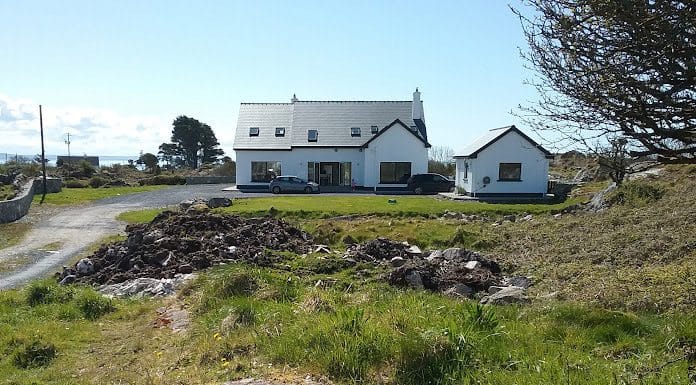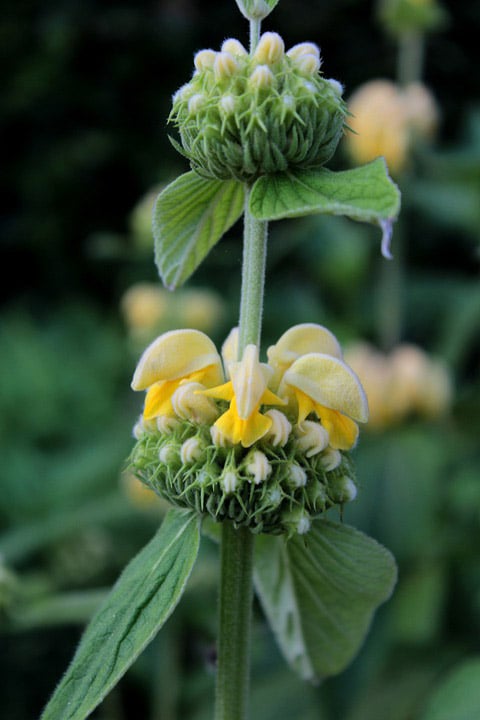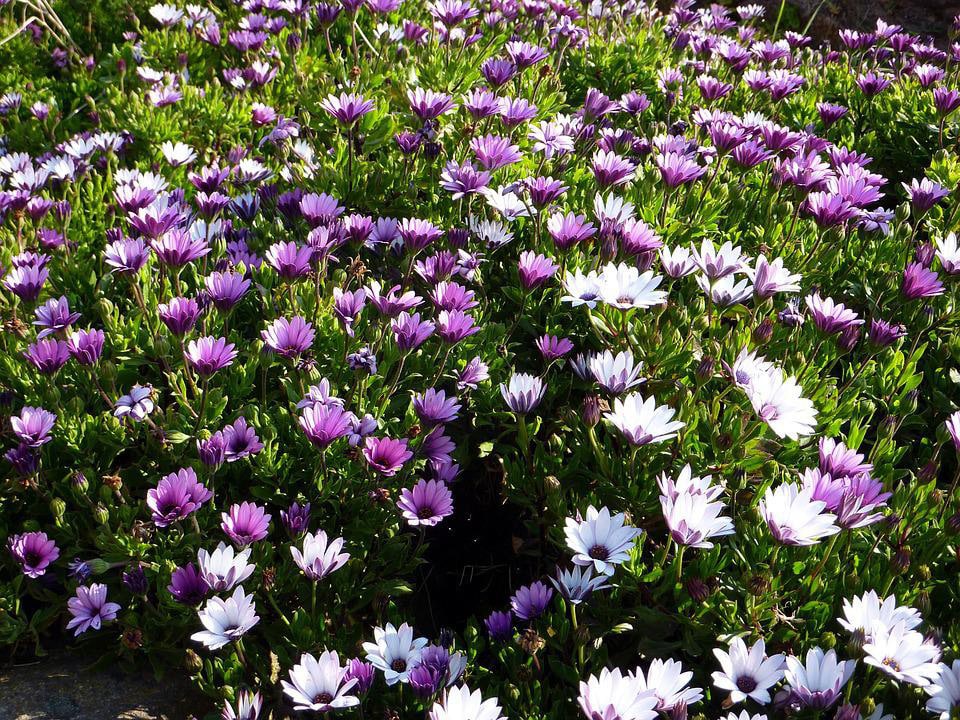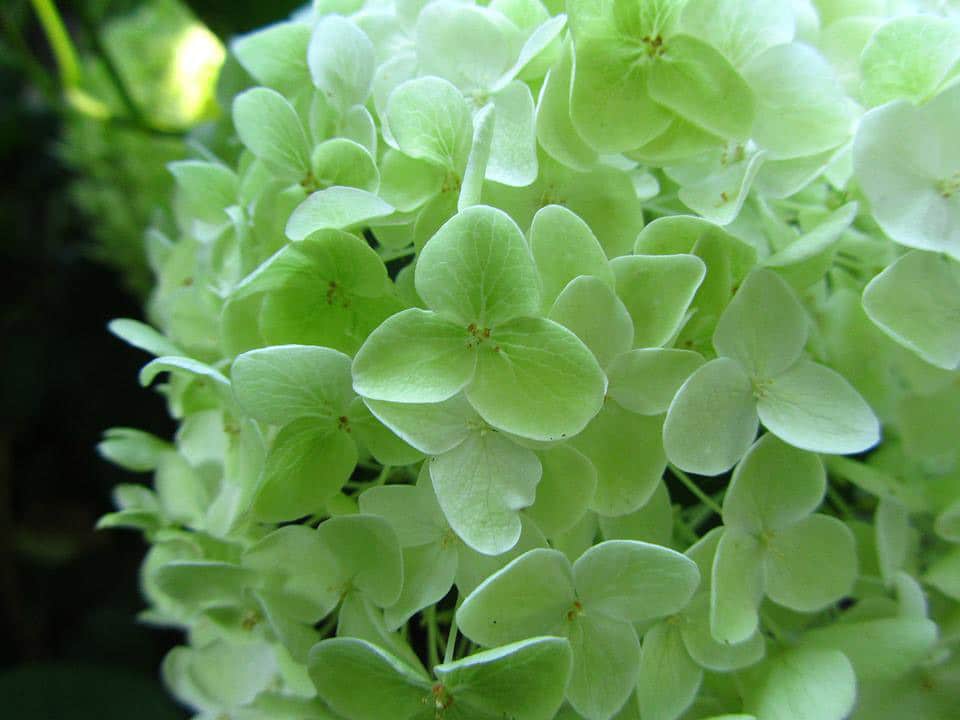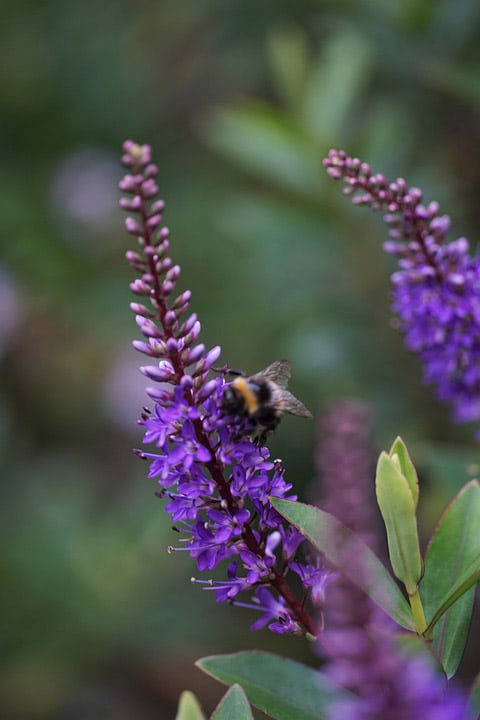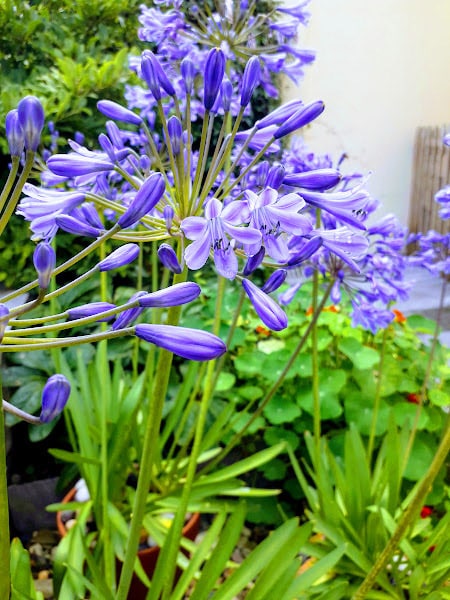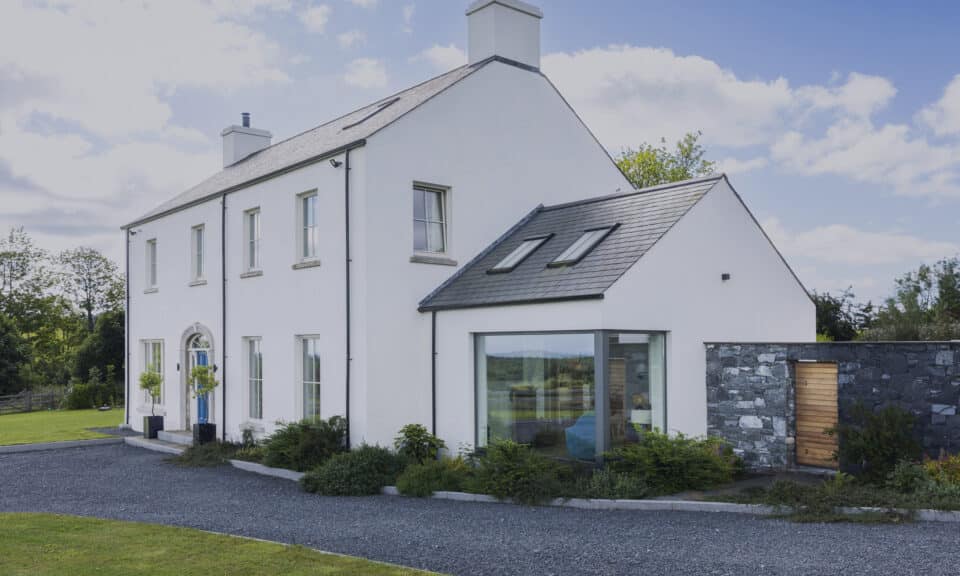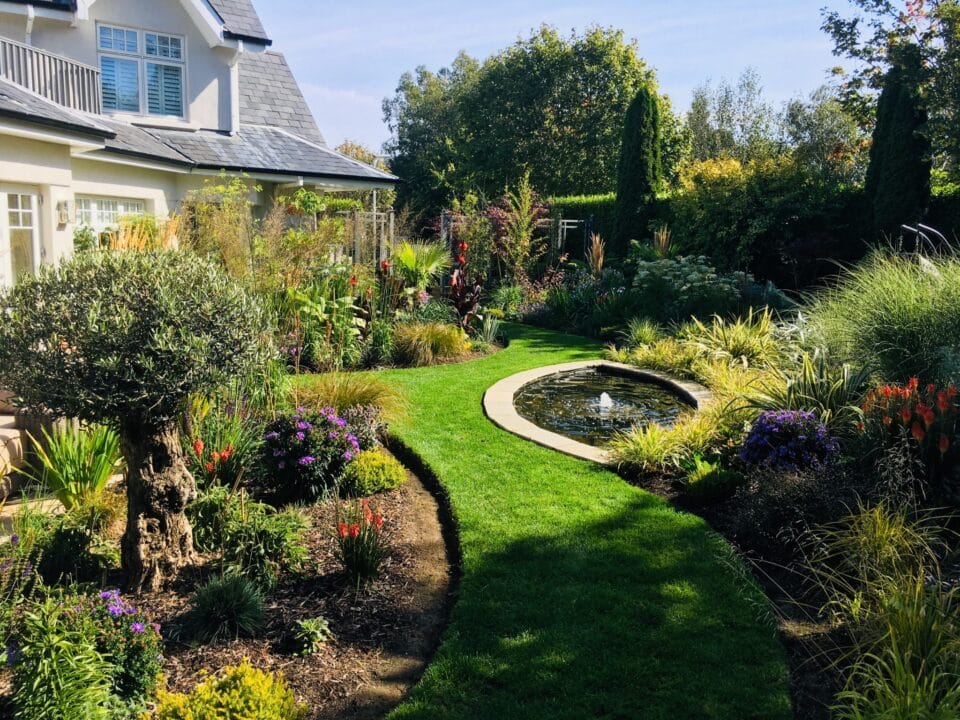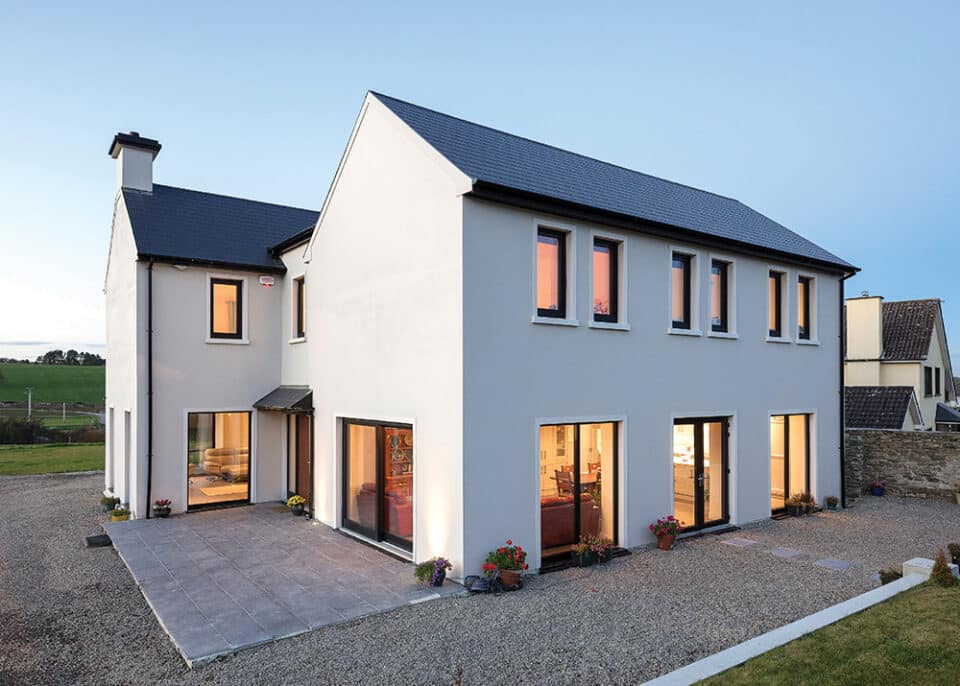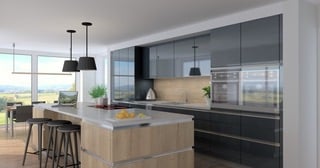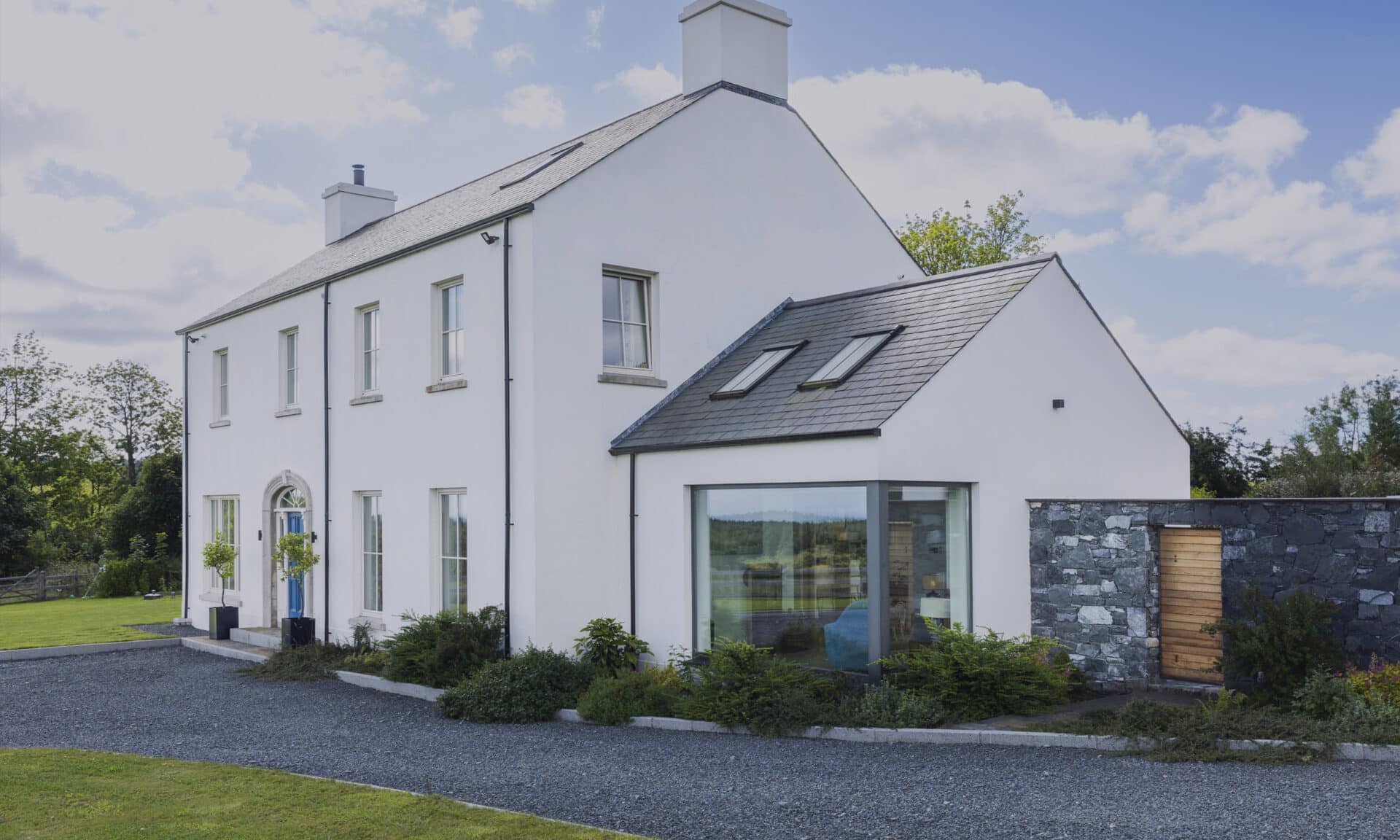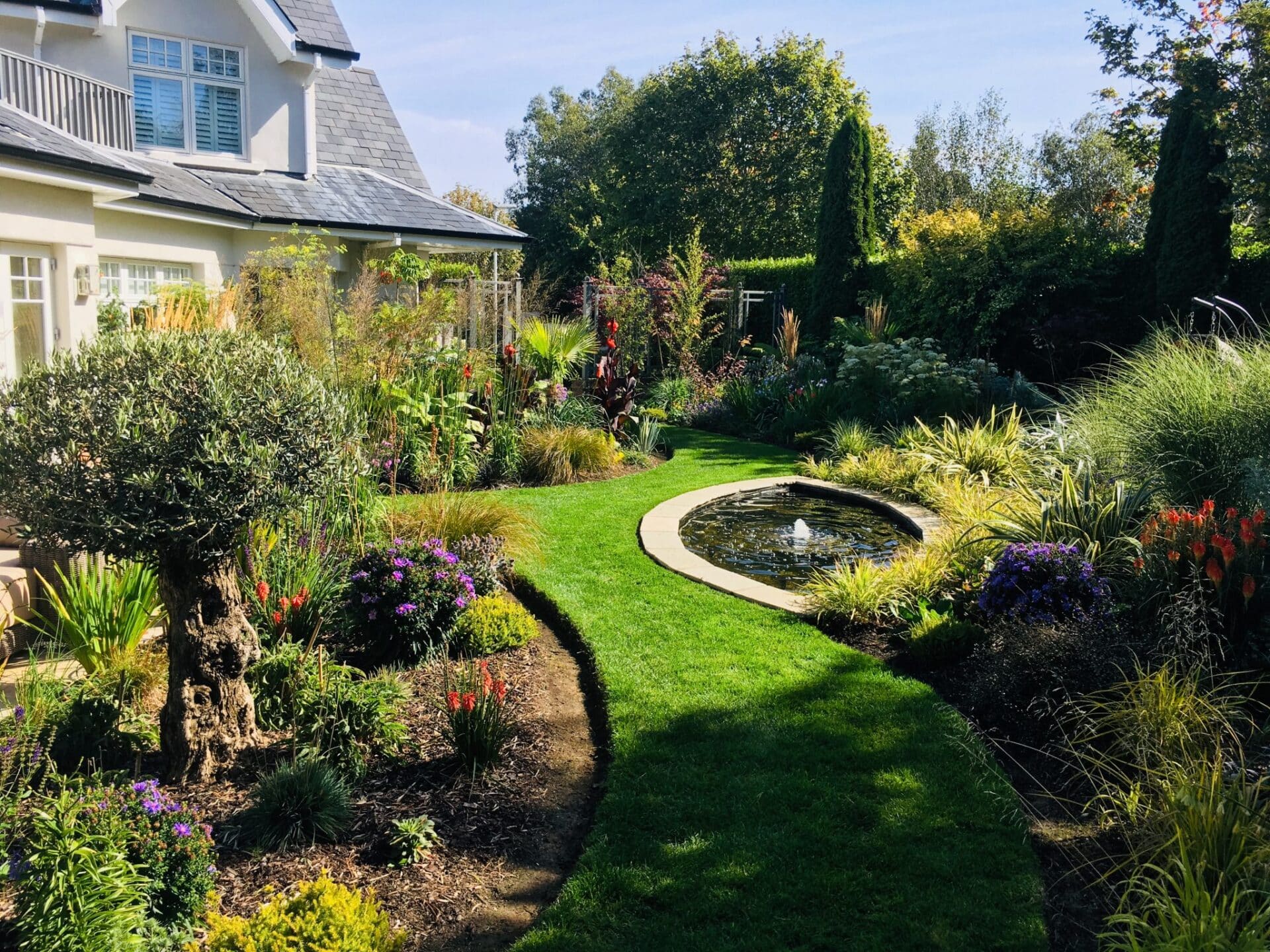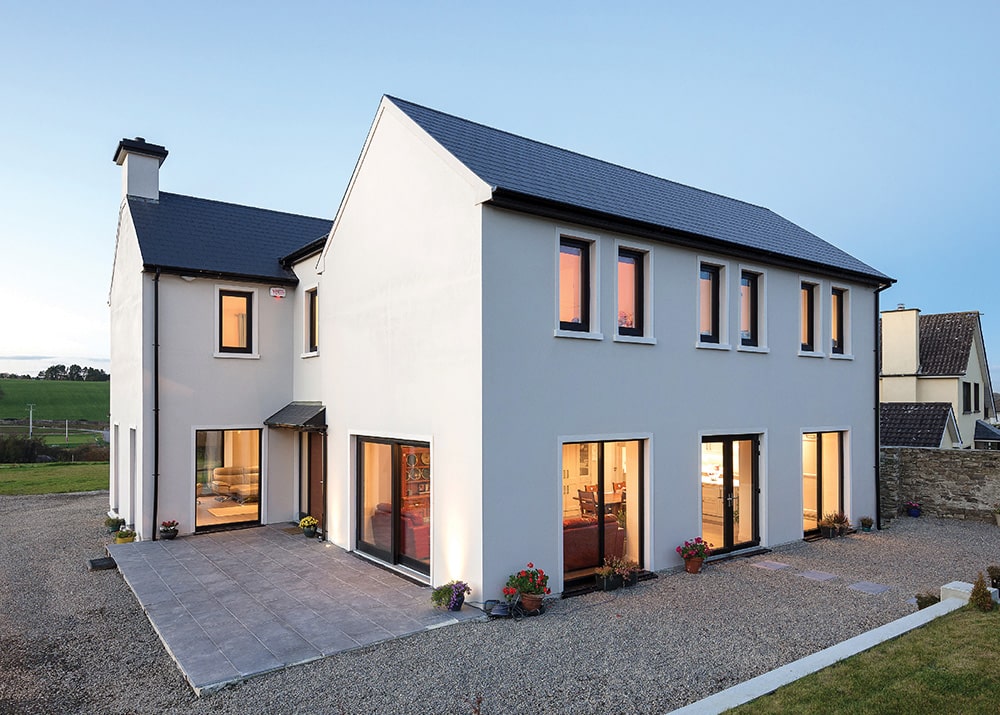In this article we cover:
- How to shelter areas of the garden for a patio
- How to organise the garden layout
- What plants work best for Atlantic stormy Irish conditions
- Top 3 design tips for coastal gardens in Ireland
- Garden use in relation to which doors are used the most in the house
- Working around the house design to maximise garden use
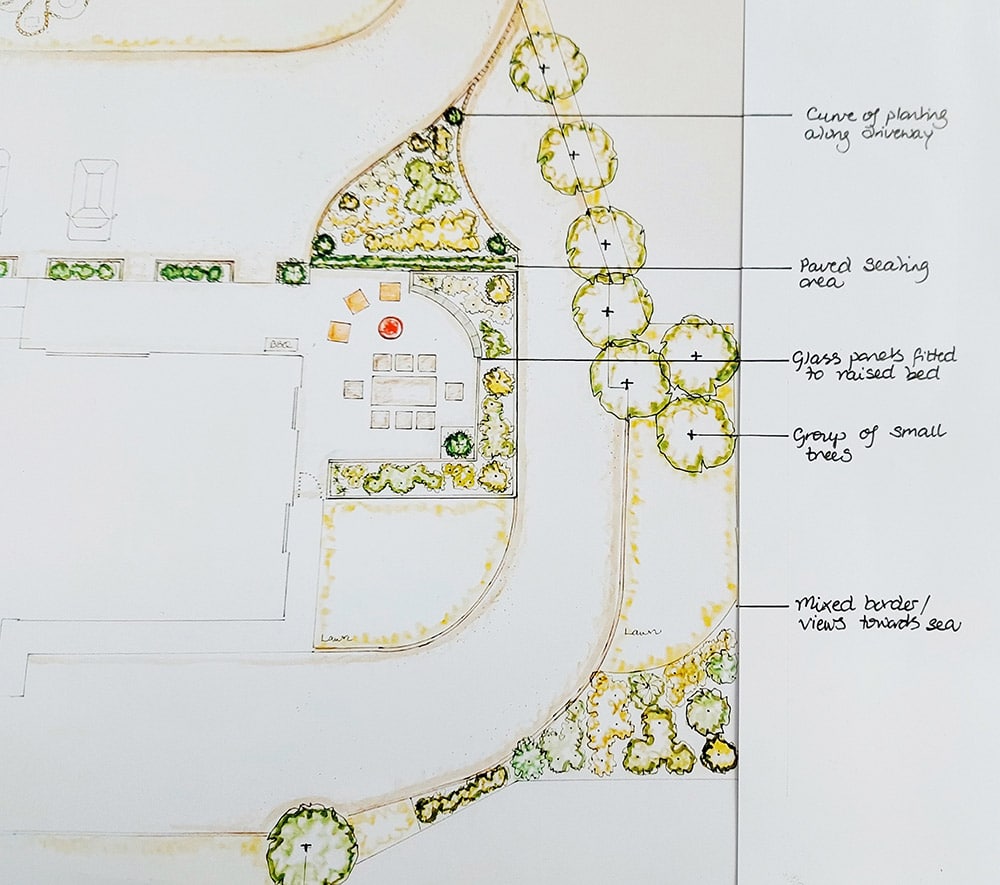
The coastline stretching west from Galway City through Connemara has to be one of the most beautiful parts of this small island we are lucky enough to call home. My clients, having roots in the area, were able to secure planning permission for a stunning home with views overlooking Galway Bay.
The downside, as anyone familiar with Ireland’s west coast will know, is that sea views usually come with sea winds – and a typical stiff south westerly can make sitting outside rather uncomfortable for all but the hardiest souls.
The site posed other challenges too – although the main front door is on the seaward, south side of the house, the entrance used most often by the family is the sliding doors opening on to the open plan kitchen / living area.
Placing the outdoor seating area just beyond the kitchen, which might at first seem the obvious location, would mean parking further away from this frequently used entrance – not ideal with small children, bags of shopping or in inclement weather.
This side of the house faces north, so a patio here wouldn’t get much sun. So I needed to design a seating area at the side of the house which could be easily reached from the kitchen while still allowing room for parking, that benefitted from the Atlantic views but was sheltered enough to sit in and for plants to grow.
The solution
Glass panels were the answer to the shelter issue. These are toughened clear glass panels suitable for outdoor use, and when fitted to a low wall, such as the back of a built in raised planter bed, can provide shelter up to a height of 1.5m, which makes seating in a windy location much more comfortable.
There are narrow gaps between each panel, allowing the wind to filter through but slowing it down greatly. This will also give the plants in the raised bed enough shelter to establish and grow, so that the paved seating area could be surrounded by greenery and colour.
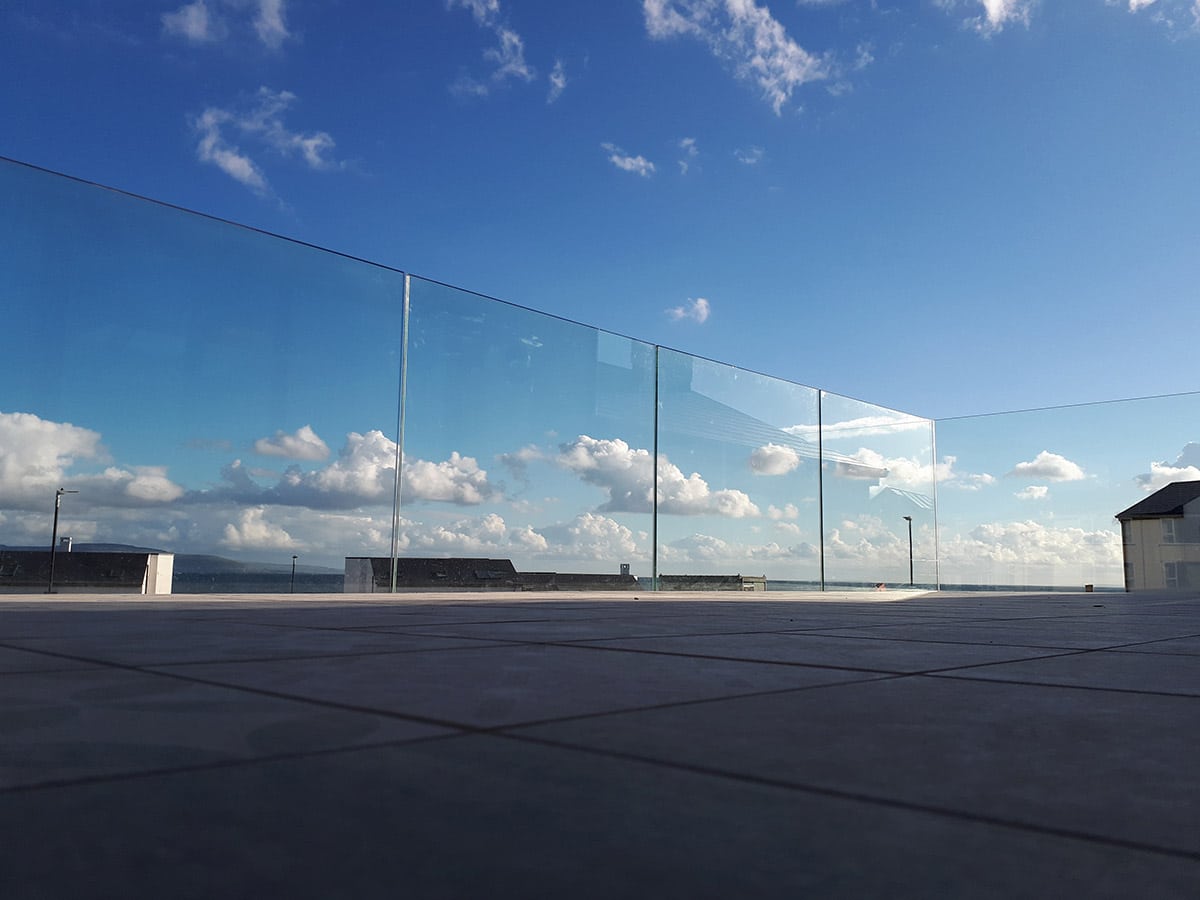
The clients needed vehicular access to one side of the seating area, as this was the only way to reach the garage entrance. So areas of lawn and planting were used either side to make the most of the space.
A row of small trees help to bring some height to the flat, quite rocky site, while providing some screening from a neighbouring property. The trees for this task are Sorbus aucuparia, our native rowan, which can withstand exposure very well.
Meanwhile, flowering cherry trees will go in a more sheltered part of the site so that their spring blossom can be enjoyed for as long as possible.
A wide path runs from the kitchen doors to the patio so that two people can stroll each way comfortably, making the patio feel more accessible.
There is room outside the kitchen for much needed parking, but planting between the path and the driveway helps to visually separate the areas. A curved triangle of planting along the approach to the house helps to soften the architecture and enhance the entrance to the home.
Plants for this garden need to be able to withstand frequent stormy days and salty winds. Luckily the proximity to the ocean means that frosts are rare, and the rocky nature of the Connemara site means that drainage is good, so a wide variety of attractive plants should do very well here.
Summer colour is provided by the rounded blue globes of agapanthus, pink rock rose or helianthemum, and osteospermum lady leitrim, a spreading, mat forming perennial with daisy shaped flowers in delicate mauve and purple.
Year round structure comes from tough but beautiful shrubs – hebe Mrs Winder with striking purple leaves, hydrangea Limelight with glowing flowerheads extending well into autumn, and phlomis fruticose or Jerusalem sage, with evergreen sage leaves and cheerful yellow flowers.
Coastal garden design tips
Make sure your seating area is easily accessible from the entrance you use the most, or you’ll end up never using it.
Plants for coastal gardens are exposed to salty air as well as wind, so need to be chosen carefully to cope with these conditions.
Hydrangea and hebe shrubs will provide evergreen winter structure in a coastal garden, while agapanthus brings brilliant blue summer colour.

